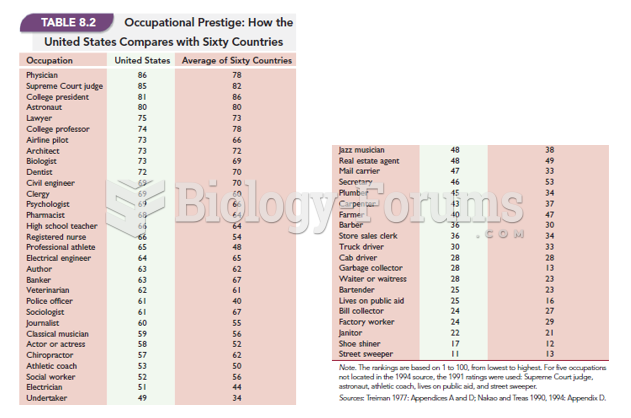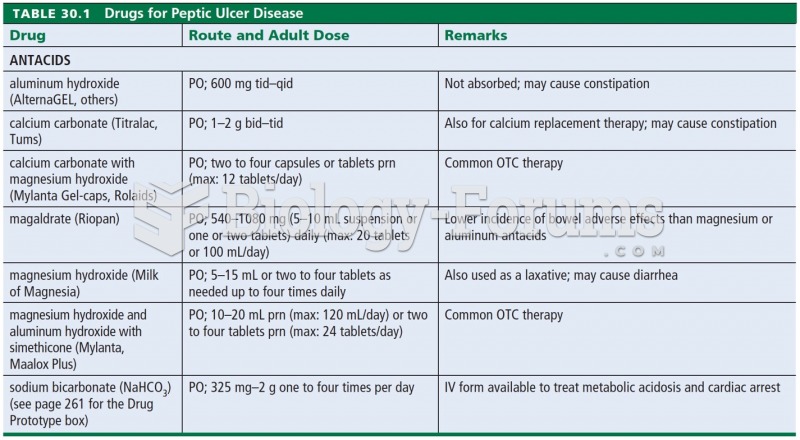Answer to Question 1
Correct Answer: 3
Rationale 1: Cryptococcus is not associated with the development of peptic ulcers.
Rationale 2: Pneumocystis carinii is not associated with the development of peptic ulcers.
Rationale 3: Helicobacter pylori is associated with 70 of peptic ulcers.
Rationale 4: Mycobacterium avium is not associated with the development of peptic ulcers.
Global Rationale: Helicobacter pylori is associated with 70 of peptic ulcers. The remaining bacteria have no relationship to the disease.
Answer to Question 2
Correct Answer: 1
Rationale 1: Ibuprofen is a prostaglandin antagonist. This will decrease the defenses of the gastric mucosa and could precipitate a peptic ulcer.
Rationale 2: The nurse does not answer the client's question correctly and is eliciting information that is not pertinent to the discussion at this time.
Rationale 3: The use of NSAIDs and corticosteroids is associated with the development of peptic ulcers.
Rationale 4: Ibuprofen is a prostaglandin antagonist. This will decrease the defenses of the gastric mucosa and could precipitate a peptic ulcer.
Global Rationale: Several frequently prescribed drugs, including corticosteroids and nonsteroidal anti-inflammatory drugs (NSAIDs), cause peptic ulcers because they are prostaglandin antagonists. These drugs suppress the secretion of mucus and bicarbonate, the repair of damaged gastric mucosal cells, and the increase of blood flow to the mucosa. It is unknown if stress is implicated in this patient's condition, but it is known that use of NSAIDs increases risk for peptic ulcer.







